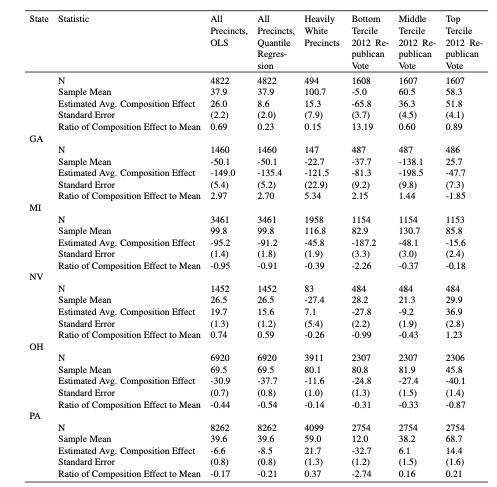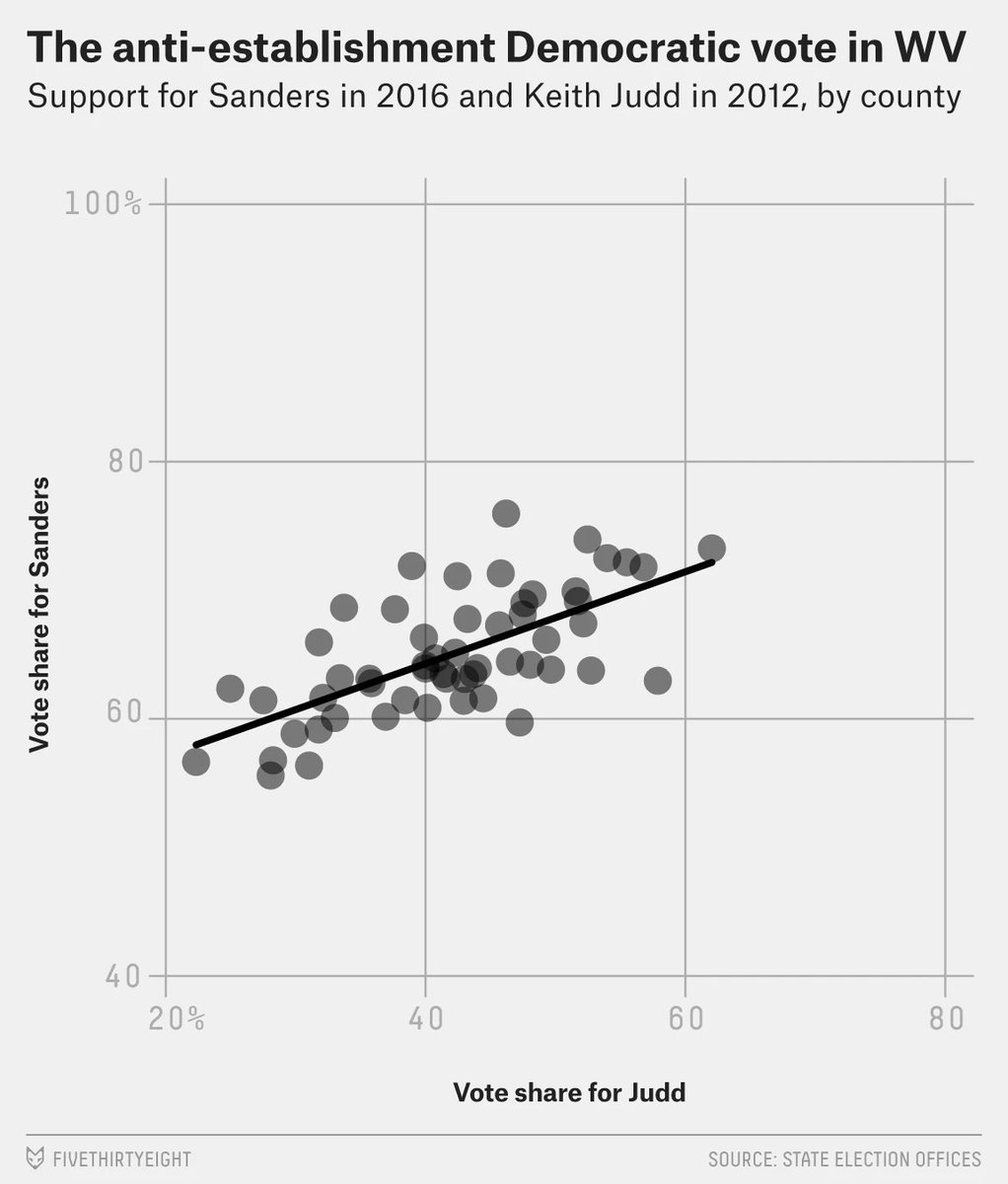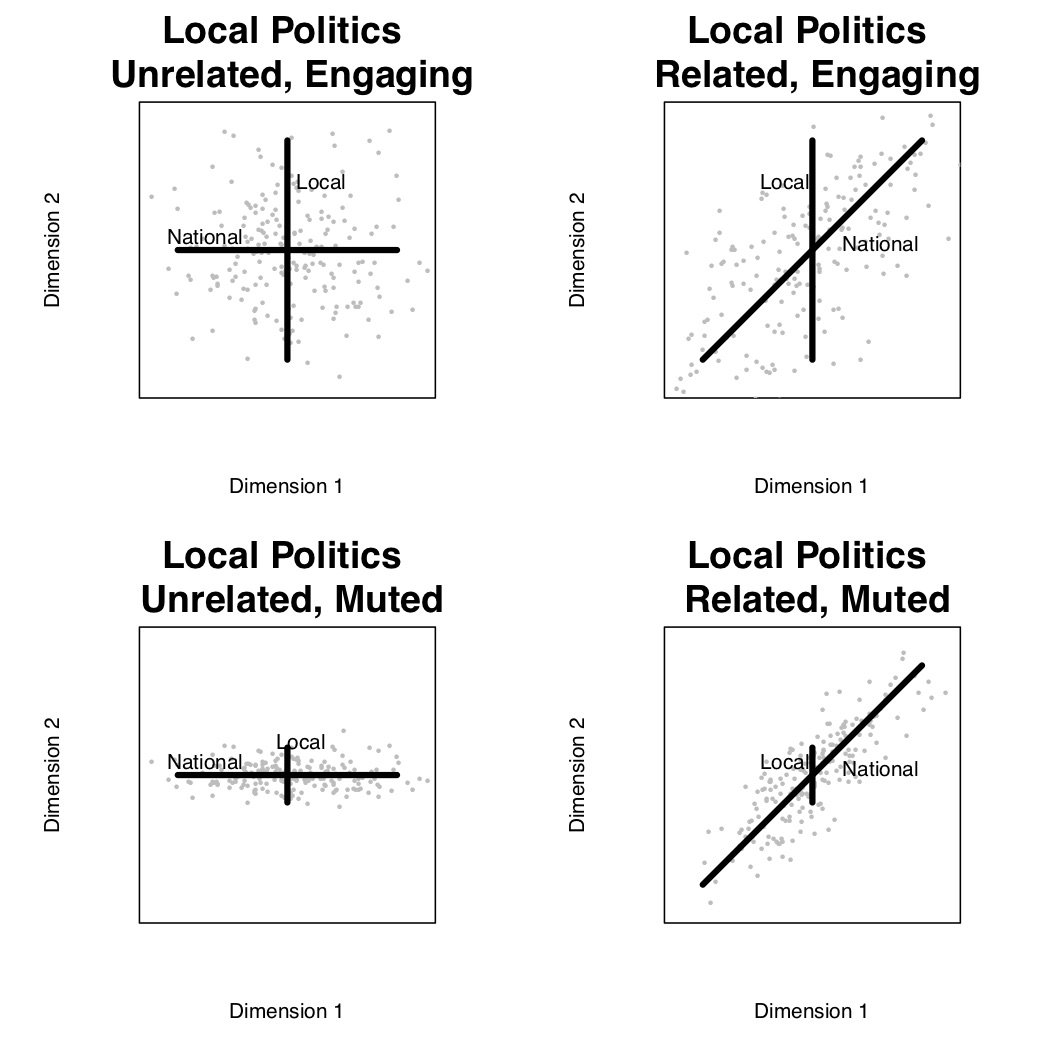
Was Trump's 2016 victory driven more by turnout or persuasion? That question shadowed the 2020 Democratic presidential primary. In this new @monkeycageblog piece I try to answer it, drawing on new research with @seth_j_hill and Greg Huber.
1/n
1/n
https://twitter.com/monkeycageblog/status/1322133074365288448
We report results from a new working paper analyzing 6 key states: FL, GA, MI, NV, OH, and PA.
Key difference from prior work--we merge precinct-level election returns with individual-level tabulations from 2012, 2016 voter files.
Paper here: papers.ssrn.com/sol3/papers.cf…
2/n
Key difference from prior work--we merge precinct-level election returns with individual-level tabulations from 2012, 2016 voter files.
Paper here: papers.ssrn.com/sol3/papers.cf…
2/n
That lets us make figures like this, which plots the GOP's gain on the y-axis by decile of precinct turnout stability (x-axis). Higher stability=more of the same voters in 2012, 2016.
Shift to GOP is *larger* on average in more stable precincts. Suggests persuasion is impt. 3/n
Shift to GOP is *larger* on average in more stable precincts. Suggests persuasion is impt. 3/n

Sure, the GOP does better in places where turnout shifts to include more GOP registrants. Here's PA again, but now the y-axis is the raw vote shift to the GOP and the x-axis is the raw turnout differential between GOP, Dem registrants.
4/N
4/N

And here's the same result for all six states (though party=primary participation for GA, MI, OH).
5/N
5/N

To provide concrete estimates of turnout vs. persuasion, we use regression models predicting precinct-level shifts with all our turnout counts (e.g. number of 2016-only Democratic voters registered in both elections, etc.). How much of the total shift does turnout predict?
6/N
6/N
The answer: it varies by state. In FL, 69% of the total pro-GOP shift in 2016 can be explained by our turnout measures. In MI, OH, and PA, the model suggests turnout helped the *Democrats*, and so Trump's entire margin (and then some) was persuasion.
7/N
7/N

Conclusion: both turnout and persuasion matter, but in 2012-2016, persuasion mattered more in the states that swung the most.
8/N
8/N
And that makes sense via math: better to add a vote to one's column *and* take one away from the other side.
Or, as I wrote for @monkeycageblog in 2012, 1-(-1) > 1:
themonkeycage.org/2012/10/electi…
9/N
Or, as I wrote for @monkeycageblog in 2012, 1-(-1) > 1:
themonkeycage.org/2012/10/electi…
9/N
This problem is a hard one; this is just one approach.
I recommend checking out related work from @yghitza and @jon_m_rob here:
@PatrickRuffini had a post-2016 series of related analyses:
NC: twitter.com/i/moments/8259…
PA: twitter.com/i/moments/8331…
10/10
I recommend checking out related work from @yghitza and @jon_m_rob here:
https://twitter.com/jon_m_rob/status/1131204654619156480
@PatrickRuffini had a post-2016 series of related analyses:
NC: twitter.com/i/moments/8259…
PA: twitter.com/i/moments/8331…
10/10
• • •
Missing some Tweet in this thread? You can try to
force a refresh








